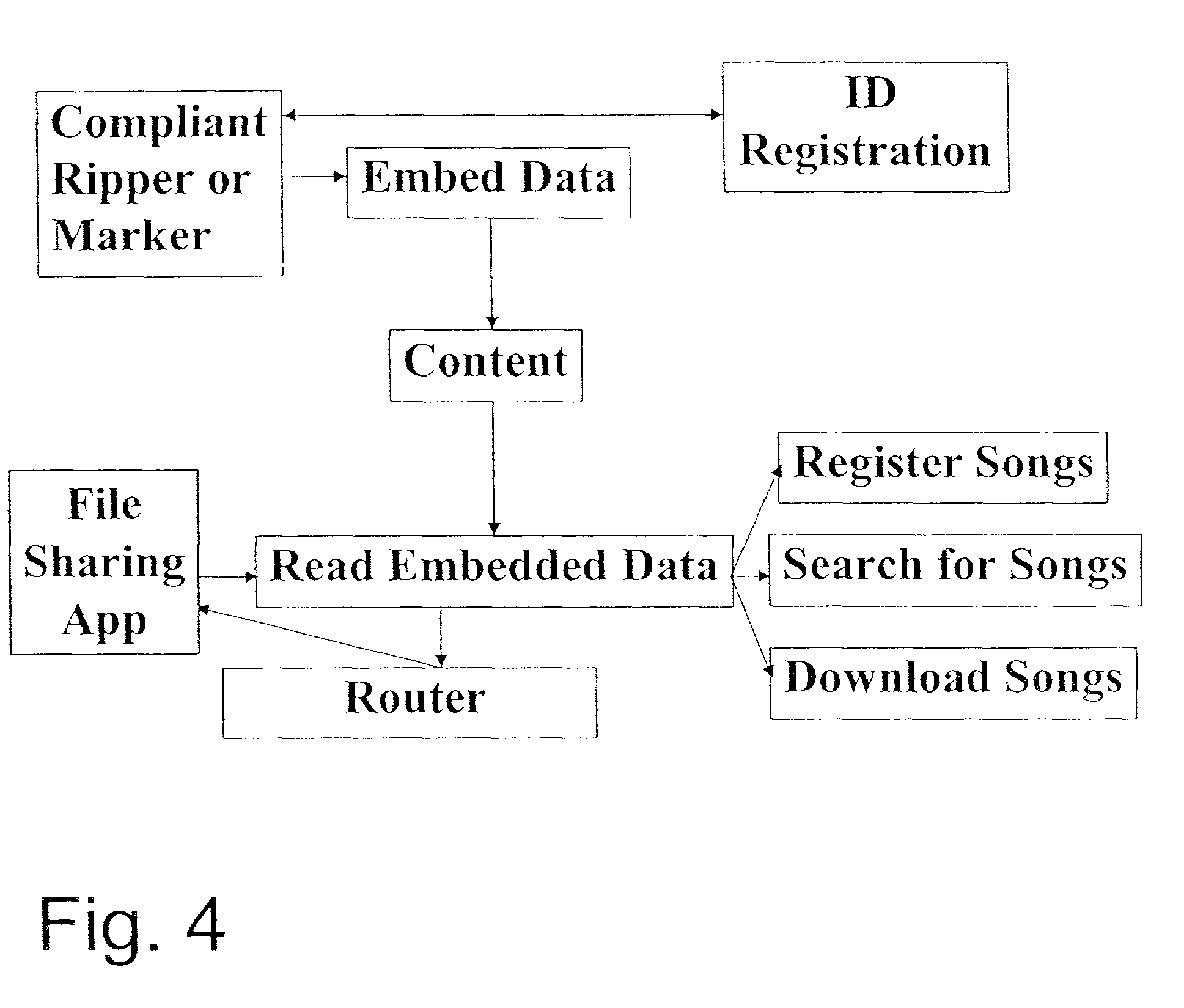Using embedded data with file sharing
a file sharing and embedded data technology, applied in the field of file sharing systems, can solve the problems of affecting the growth and improvement of the internet, violating copyright laws, and allowing massive content piracy through file sharing methods,
- Summary
- Abstract
- Description
- Claims
- Application Information
AI Technical Summary
Benefits of technology
Problems solved by technology
Method used
Image
Examples
specific example utilization
[0109]In this specific example utilization, it is assumed that the embedded data has been added and dynamically locked (including being modified by the audio content and encrypted, as defined in patent application Ser. No. 09 / 404,291 (Now U.S. Pat. No. 7,055,034), already incorporated by reference) to the audio throughout the frames in all legitimate MP3 files at the time of creation. (Note that the embedded data could include an ID to identify the content and / or artist, such as could be created from CDDB's database, available at http: / / www.cddb.com, and incorporated by reference, but not included in this example.) For personal use, this may happen at the ripping stage, i.e. when content on an optical disk like a CD is converted into a MP3 file. For retail use, this may happen when the file is made available for sale, probably through a commercial ripper. This can also happen during the file transfer in the file sharing system. The identity of the file can be determined from its ID3...
PUM
 Login to View More
Login to View More Abstract
Description
Claims
Application Information
 Login to View More
Login to View More - R&D
- Intellectual Property
- Life Sciences
- Materials
- Tech Scout
- Unparalleled Data Quality
- Higher Quality Content
- 60% Fewer Hallucinations
Browse by: Latest US Patents, China's latest patents, Technical Efficacy Thesaurus, Application Domain, Technology Topic, Popular Technical Reports.
© 2025 PatSnap. All rights reserved.Legal|Privacy policy|Modern Slavery Act Transparency Statement|Sitemap|About US| Contact US: help@patsnap.com



